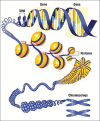Epigenetics in oral squamous cell carcinoma
- PMID: 28932035
- PMCID: PMC5596676
- DOI: 10.4103/jomfp.JOMFP_150_17
Epigenetics in oral squamous cell carcinoma
Abstract
Oral squamous cell carcinoma (OSCC) is the most common type of oral neoplasm, accounting for over 90% of all oral malignancies and 38% of head and neck tumors. Worldwide, OSCC is the eighth most common human cancer, with more than 500,000 new cases being diagnosed every year with a fairly onerous prognosis, encouraging further research on factors that might modify disease outcome. Genetic and/or environmental risk factors associated with the development of oral cancer have been sufficiently understood (smoking, alcohol, betel, diet, living habits, etc.). Knowledge of the genetic basis in oral carcinogenesis is still a challenging task. To improve the diagnosis and prevention, a previously unknown type of chromatin modification, known as epigenetic, which is defined as heritable DNA changes that are not encoded in the sequence itself and which are reversible and increasingly appear to serve fundamental roles in cell differentiation and development are studied. Tumors shed their DNA into the blood and epigenetic changes that occur early during tumorigenesis, sometimes even in premalignant lesions, can provide valuable biomarkers. Key components involved in epigenetic regulation are DNA methylation, histone modifications and modifications in micro ribonucleic acids (miRNAs). Epigenetic modifications may contribute to aberrant epigenetic mechanisms seen in oral precancers and cancers. In the near future, epigenetic variations found in oral dysplastic cells can act as a molecular fingerprint for malignancies.
Keywords: Carcinogenesis; DNA; epigenetics; methylation; oral squamous cell carcinoma.
Conflict of interest statement
There are no conflicts of interest.
Figures
References
-
- Parkin DM, Bray F, Ferlay J, Pisani P. Global cancer statistics, 2002. CA Cancer J Clin. 2005;55:74–108. - PubMed
-
- Stewart BW, Greim H, Shuker D, Kauppinen T. Defence of IARC monographs. Lancet. 2003;361:1300. - PubMed
-
- Blot WJ, McLaughlin JK, Winn DM, Austin DF, Greenberg RS, Preston-Martin S, et al. Smoking and drinking in relation to oral and pharyngeal cancer. Cancer Res. 1988;48:3282–7. - PubMed
-
- Lingen MW, Pinto A, Mendes RA, Franchini R, Czerninski R, Tilakaratne WM, et al. Genetics/epigenetics of oral premalignancy: Current status and future research. Oral Dis. 2011;17(Suppl 1):7–22. - PubMed
Publication types
LinkOut - more resources
Full Text Sources
Other Literature Sources



